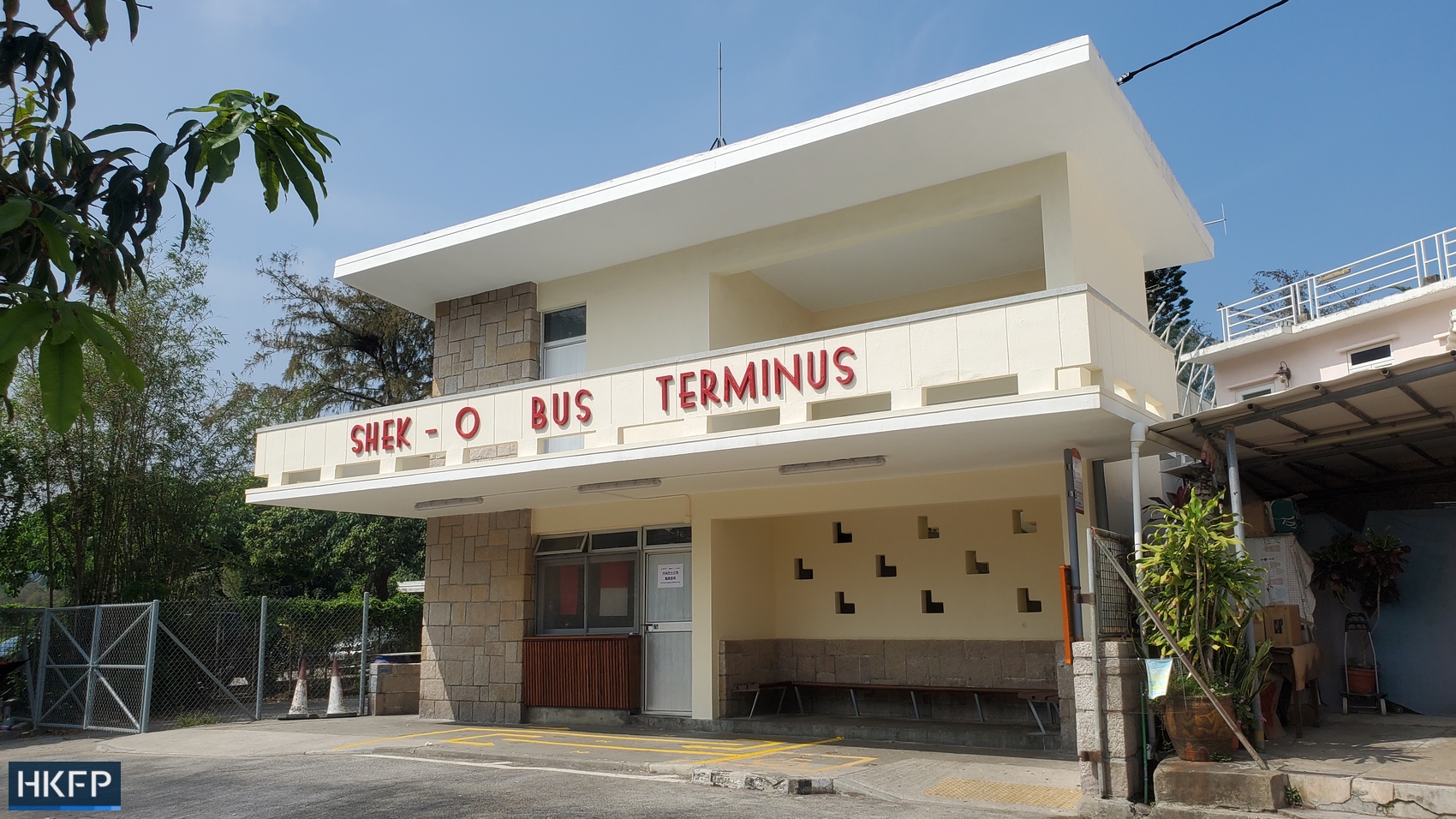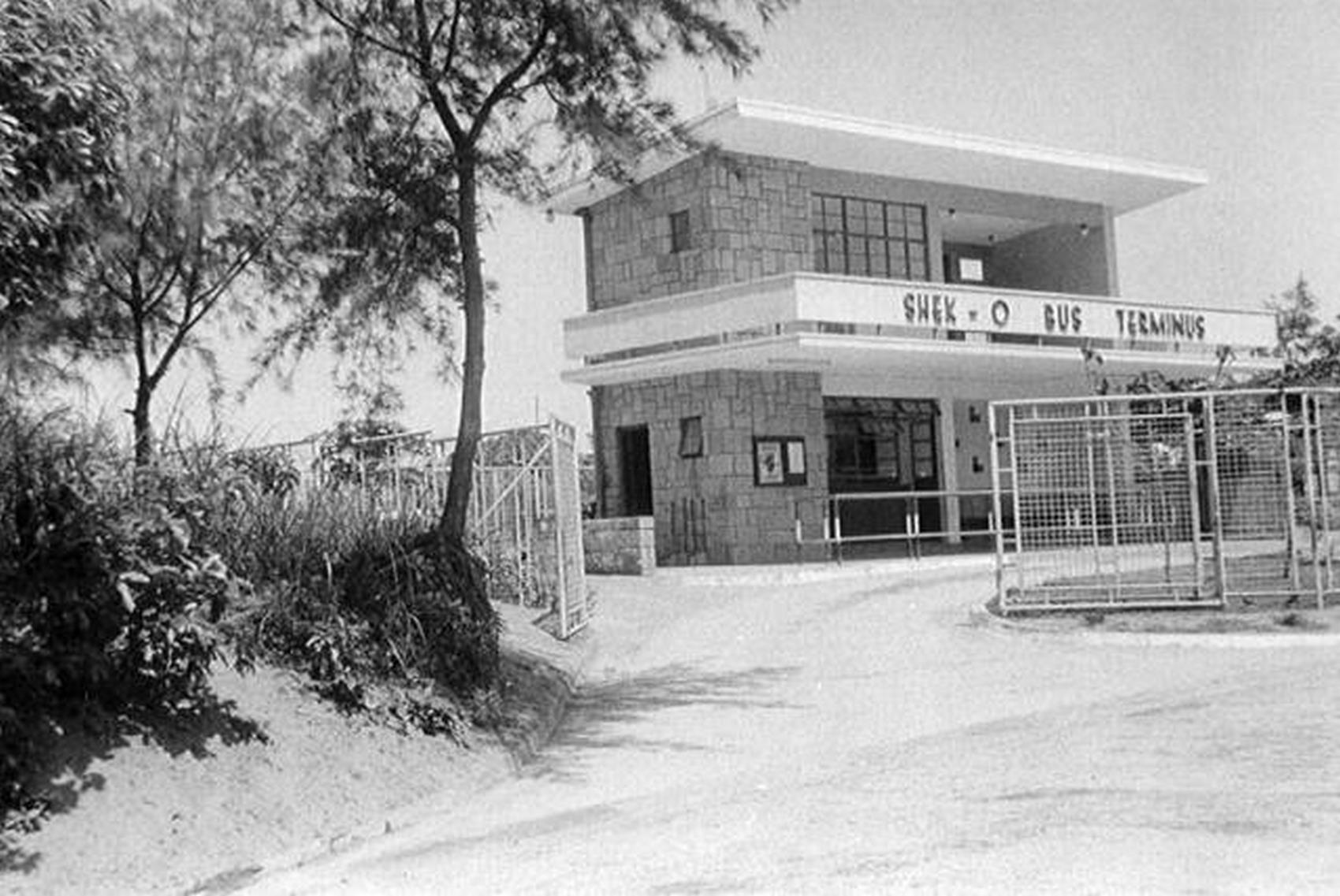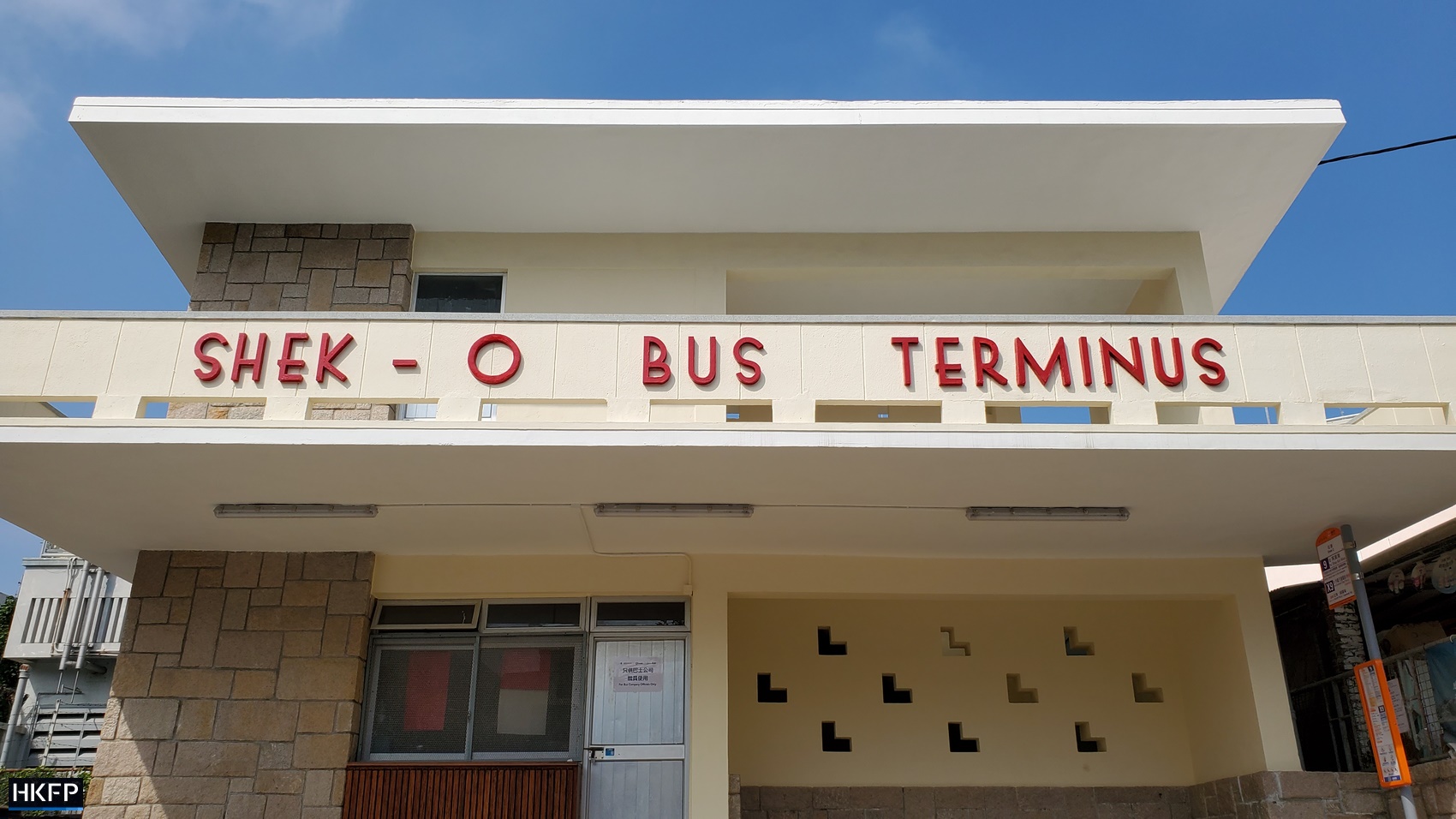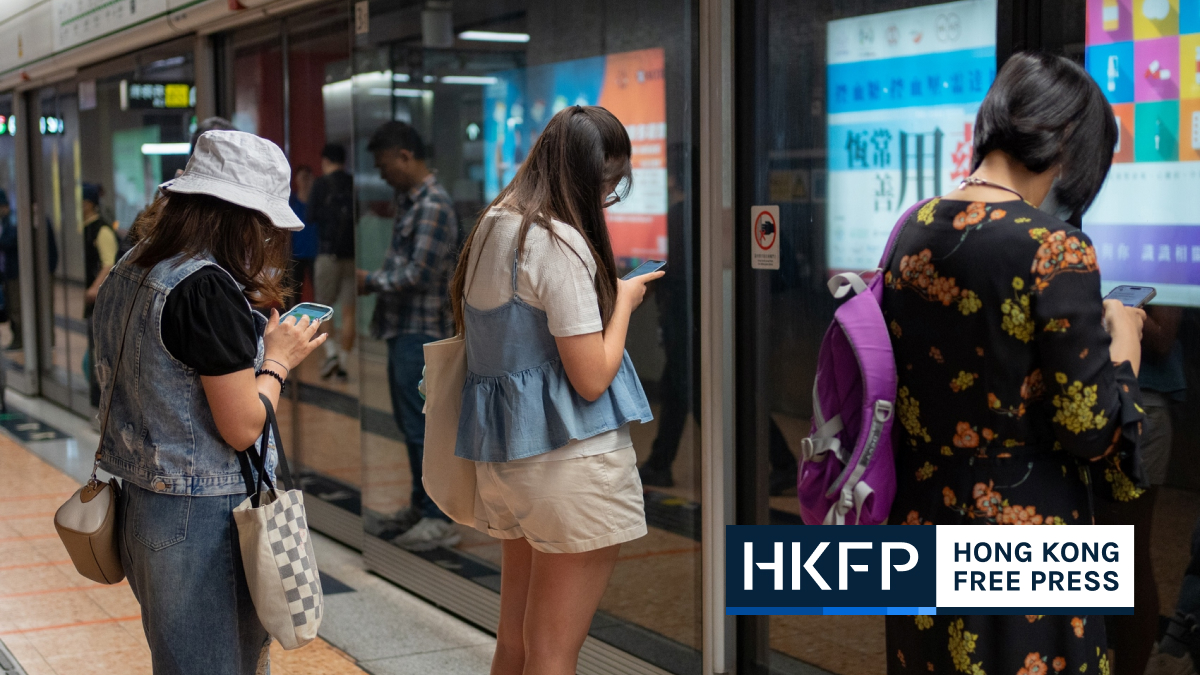At the end of a twisting, 20-odd minute bus journey from Shau Kei Wan in Hong Kong’s Eastern District stands a modest modernist structure in concrete and masonry – Shek O Bus Terminus.
For 67 years, it has silently and steadfastly welcomed residents and visitors to the sprawling seaside village of the same name, succumbing only to the elements and the passing of time.

Until recently, though, daytrippers could be forgiven for disregarding the utilitarian structure when descending from a double decker at the end of the New World First Bus (NWFB) number 9 route. When the Southern District Council discussed its restoration last May, then-district councillor Chan Ping-yeung described the terminus as having “decayed into ruins” and “obviously lacking repair and maintenance,” according to minutes from the meeting.
What a difference 12 months and some much-needed attention makes.
‘Of special merit’
Renovations were completed early this year by NWFB, which has leased the bus terminus from the government’s Land Department since 1998, when it took over the routes run by China Motor Bus.
At the time, it was just like any other bus stop – if not architecturally, at least in terms of upkeep. As a result, any mention of conservation was lacking from the initial tenancy agreement between the government and NWFB.

However, in 2013, Shek O Bus Terminus was appraised by the Antiquities Advisory Board and granted Grade 2 historic building status, a category vaguely defined by the Antiquities and Monuments Office (AMO) as worthy “of special merit,” where “efforts should be made to selectively preserve.”
Despite the passage of almost a decade since the structure was given a heritage distinction, a conservation clause remains lacking from the lease, even though it is renewed every three months and has been for 24 years.

“There is a weakness in the contract for use of the bus terminus regarding maintenance obligations,” Southern District Councillor and co-founder of NGO Designing Hong Kong, Paul Zimmerman, told HKFP. “Despite this, the bus company has made the effort to fix up the building entirely and removed the ugly chain link fence that was in front of it.”
When approached by HKFP for comment, a spokesperson from the Lands Department said: “NWFB needs to keep and maintain the concerned building at their own cost under the tenancy agreement.”

A spokesperson for NWFB told HKFP that it “strives to improve [the] bus waiting environment for passengers.”
With regards to Shek O Bus Terminus, NWFB “has carried out renovation works for the building after consulting the Antiquities and Monuments Office, including painting works, upgrading the washroom facilities to provide separate toilet compartments for male and female bus captains, and renovating the concrete letter signs on the building,” as well as retaining “some original facilities inside the building, such as electric boxes, fans, water wells, and the iconic ‘washing stones’ on the exterior wall.”
Modernist architecture in Hong Kong
Completed in 1955, Shek O Bus Terminus was designed by Su Gin Djih of Hsin Yieh Architects and Associates, a firm from Shanghai that relocated to Hong Kong in the late 1940s. Su was among the first generation of Chinese architects to study in the US, and became “a very successful and prolific architect in Hong Kong in the post-war era,” according to architectural conservationist at the University of Hong Kong, Fredo Cheung.

“Not a lot of his work survived the wrecking ball,” Cheung told HKFP. But the Shek O Bus Terminus did, along with the Hong Kong Funeral Home in North Point and New Asia Middle School in Kowloon City.
Built in a style that recalls the American branch of modernism, the two-storey structure emphasised horizontality and clean lines, in particular through its signature cantilevered balcony. “This was considered avant garde,” Cheung said; it took form by “tapping into the latest that construction technology had to offer.”

The bus station also evoked modernism in its deviation “from the classical notion that beauty lies in symmetry,” Cheung said, with one side recessed to provide shelter and the other enclosed, housing toilets and storage space for bus company staff.
‘This is your identity’
After being consulted by NWFB about its restoration proposal, the Antiquities and Monuments Office advised that work should be carried out “with great care to avoid unnecessary disturbance or damage to the building; interference to the historic fabrics of the building should be kept to an absolute minimum; and appropriate protective measures to safeguard the building and its historic fabrics should be devised and implemented,” a spokesperson for the office told HKFP.
The spokesperson for NWFB said that “Upon completion of the renovation works, the historical development of Shek O Bus Terminus is further promoted, while delivering the message of conservation to the public.”

Cheung – who has yet to see the restoration in person – said it looked like it had been “quite sympathetically done.” However, he was keen to stress that there was more to conservation than simply preservation.
“Conservation is about managing change,” he said. It was also more sustainable than tearing old buildings down – which comes with “a huge carbon footprint” – and could be used to cultivate a sense of identity and even promote tourism. But for a project to be successful, Cheung said, it first must engage with the immediate community.
Zimmerman agreed, saying that: “Hongkongers love their city and hope to see the few remaining architectural details safeguarded as permanent features of our landscape.”

Shek O residents HKFP spoke to seemed satisfied with their new-look bus stop, with one remarking that the renovation’s reported HK$500,000 price tag was very “reasonable” considering how long the structure had been standing. Another said the restoration was “very good.”
“On top of being a functioning bus terminus, [this] heritage asset has evolved over time into an iconic landmark which is part of the Shek O identity,” Cheung said.
“Even today when you look at it, it stands out. And when you think of Shek O, you think of the bus terminus and you think of the beach.”

For that to continue to be the case, a conservation strategy should be encouraged, according to Zimmerman. “There is a need to review the long-term plan and put in place adequate regulation of the use and maintenance of the building, as well as its surroundings,” he said. When it comes to lasting change, short-term agreements fall short.
After all, as Cheung said of Shek O Bus Terminus and Hong Kong’s heritage architecture more generally, “these are the features that make your city stand out. This is your identity, this is your culture.”
Support HKFP | Policies & Ethics | Error/typo? | Contact Us | Newsletter | Transparency & Annual Report | Apps
Help safeguard press freedom & keep HKFP free for all readers by supporting our team

LATEST FROM HKFP
HKFP has an impartial stance, transparent funding, and balanced coverage guided by an Ethics Code and Corrections Policy.
Support press freedom & help us surpass 1,000 monthly Patrons: 100% independent, governed by an ethics code & not-for-profit.










